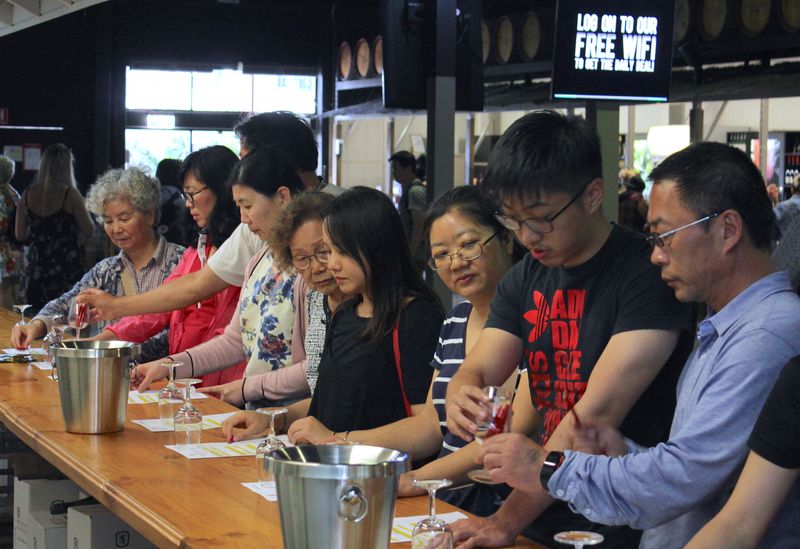By Wayne Cole and Stella Qiu
SYDNEY (Reuters) -For Australia, China has become the Golden Goose that's always about to stop laying.
For more than three decades now, barely a year has passed where a China crisis was not just around the corner, certain to shut down the rivers of gold flowing into Australia's trade coffers.
The latest scares have come in the form of a collapse in China's stock markets and a failure of developer China Evergrande (HK:3333) and what it might mean for the property sector, a backbone of China's economy.
That should be bad news for Australia given the sector is a major user of steel and thus iron ore, the country's single biggest export earner.
Yet while China plays an outsized role, David Goodman, Director of the China Studies Centre at the University of Sydney, rejects the idea Australia is dependent on it.
"Our two economies, well, they're fully complementary but the difference is we are really open in the world economy. China is the best place for us to be, don’t get me wrong, (but) if we didn't have that, we'd be somewhere else. I think everybody accepts that."
EXPORTS IN DEMAND
The threat posed by Evergrande is hardly a surprise either. As far back as 2021, the Reserve Bank of Australia (RBA) was writing about it, and Evergrande has been a feature in its policy outlooks ever since.
More than two years later, Australia's exports to China have rarely been stronger.
The latest data for December show goods exports hit A$18.5 billion ($12 billion), up 14.7% on a year earlier. Over the past year, China has bought A$203 billion worth of Australian exports, a cool 37% higher than the same period of 2019 before the pandemic struck.
Much of this is iron ore, which has many more buyers than just China and alone generated A$187 billion in earnings in the year to December.
Chinese imports of the mineral look to have been near record levels in January, helping keep prices firm around $130 a tonne. That is far above the $60 a tonne the Australian government assumes for its budget and a major windfall for tax receipts.
Indeed, that revenue is a major reason the Labor government can afford a sweeping round of cuts to income taxes this year.
Other exports have also benefited from a recent thawing in diplomatic relations between Beijing and Canberra, which has seen China lift restrictions on coal and barley and likely soon ease tariffs on wine.
INVESTMENT? WHAT INVESTMENT?
One area of weakness has been tourism from China, which is less than half of pre-pandemic levels and a drag on casinos and luxury goods retailers.
Student numbers from China have also dropped, but the gap has been more than filled from elsewhere, notably India. So great have been inflows that the government is tightening rules for entry.
Neither is Australia reliant on inward investment from China, which has always been trivial compared to the huge sums spent by global mining and energy companies.
According to data from KPMG and the University of Sydney, the most Chinese investment ever reached was $16 billion in 2008, a drop in the ocean for Australia's A$2.6 trillion ($1.71 trillion) economy.
The constant angst over China has weighed on the Australian dollar, which is now used by investors globally as a liquid proxy for bets against the Asian behemoth.
The Aussie currently languishes at $0.6500 when historical measures of fair value suggest it should be around $0.7300, and much of that is the China effect.
Yet, again, that has been a boon for mining profits as Australian resources are priced in U.S. dollars, while RBA studies show the impact on domestic inflation has been minor.
"So there is not really a clear kind of disruptive force other than what you might see in terms of market sentiment at the moment," was the conclusion of Elliot Clarke, head of international economics at Westpac.

"Are we reliant on Chinese developers here? No, not really. Do foreign investors believe that there's contagion risk from China to Australia? No, not really."
($1 = 1.5218 Australian dollars)